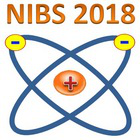Speaker
Mr
Vladislav Kazakov
(Novosibirsk State University, Russia)
Description
The purpose of the work is to expand the electronic database "Electronic structure of atoms" [1] through the information on the negative ions of various chemical elements. As far as the authors are aware, at present there is no specialized database on negative ions in the scientific literature and Internet.
The collection and analysis of information on atomic systems can be documented in a tabular or graphical representation. It is convenient to have accurate and extensive data on the spectra of elements in the form of tables, while the graphical form is good for general orientation in the electronic structure of atomic systems.
In atomic spectroscopy, a graphical form of displaying information in the form of Grotrian diagrams is generally used, the main purpose of which is to provide a visual representation of the distribution of excited states of electron configurations and present the most intensive transitions. For neutral atoms and positive ions, the experimentally measured spectral lines lie at the base of plotting the diagrams. According to these data, the spectral terms and configurations are theoretically calculated. In view of the unusual use of quantum laws for negative ions, as well as the scarcity of information about their spectra, the method for constructing of Grotrian diagrams of negative ions is somewhat different. At first, the energies of the spectral terms are found from the published experimental data. After that the wavelength of the spectral line is calculated from the energy difference between the two terms. As a rule, the multiplicities of terms are indistinguishable.
Let’s take the chlorum (Cl) as an example. Comparing the diagram of positive ion Cl II [1] and constructing the same for negative ion according on the data taken from [2] we can reveal significant differences. First of all, resonance lines of ions belong to different spectral areas and there is no data on the intensity of spectral lines of the negative ion. The tabulated values for the positive ion Cl II are presented muuch more completely, than that for the negative ion of this element: 274 levels and 691 lines for Cl II, but only single data for the negative ion.
The authors expect that the systematization of experimental data on the spectral properties of negative ions and its representation in a graphical form will be useful to physicists working with these atomic systems.
[1] http://www.grotrian.nsu.ru
[2] Massey H. Negative ions. 3rd edition. Cambridge (UK): Cambridge University Press, 741 p.
Primary author
Mr
Vladislav Kazakov
(Novosibirsk State University, Russia)
Co-authors
Alexey Yatsenko
(Institute of Automation and Electrometry SB RAS)
Kair Zhumadilov
(Novosibirsk State University, Russia)
Oleg Meshkov
(BINP)
Vitaly Kazakov
(Novosibirsk State University, Russia)

